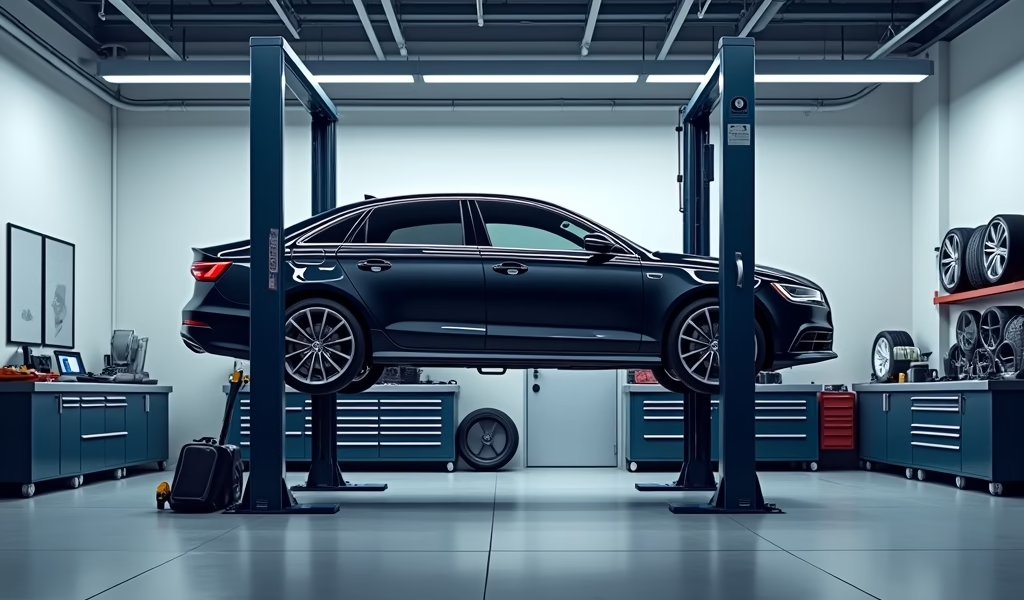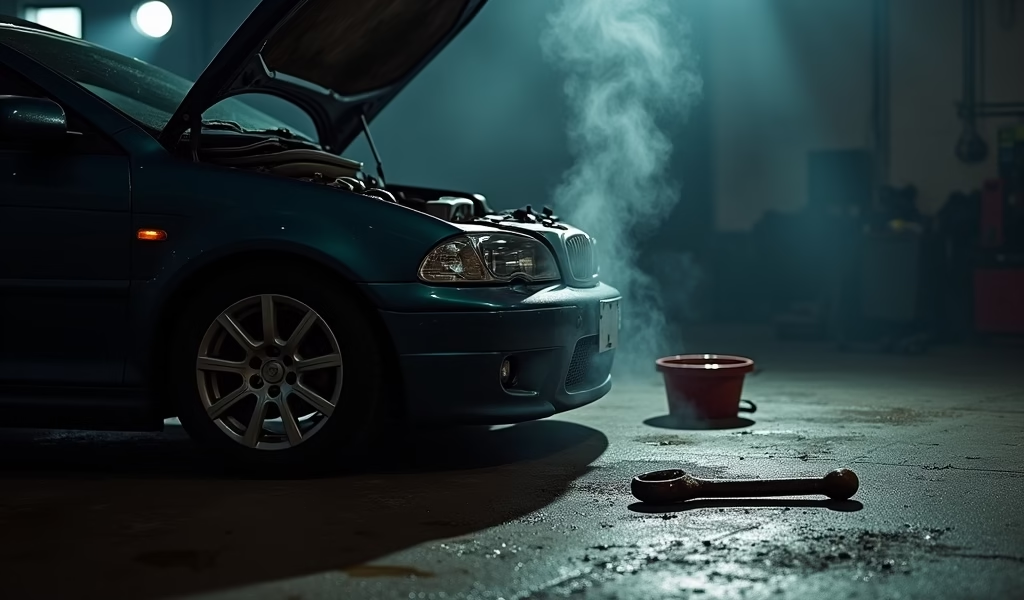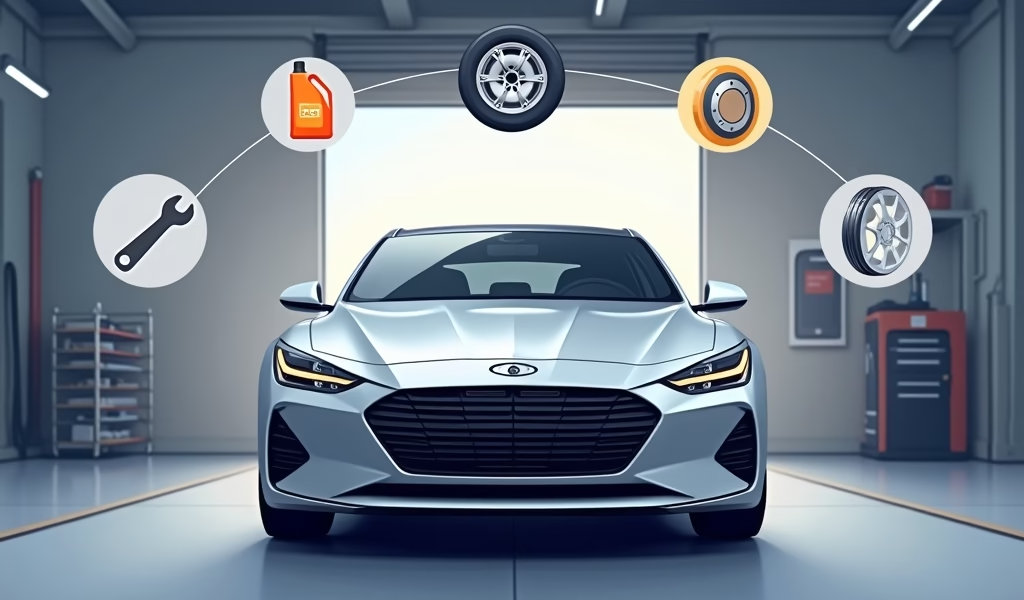Overview
This guide outlines a complete car maintenance schedule from 3,000-mile oil changes to 60,000+ mile major services, emphasizing how regular maintenance prevents costly repairs and extends vehicle life. Following manufacturer recommendations while adjusting for your specific driving conditions can help your vehicle reach 200,000+ miles while maintaining safety, performance, and resale value.
Table of Contents
- Why Regular Maintenance Matters
- Understanding Your Owner’s Manual
- Every 3,000-5,000 Miles or 3 Months
- Every 15,000-30,000 Miles or 12 Months
- Every 30,000-60,000 Miles
- Every 60,000+ Miles
- Seasonal Maintenance Tips
- DIY vs. Professional Maintenance
- Maintenance for Different Vehicle Types
- Digital Tools to Track Maintenance
- Conclusion
- Frequently Asked Questions
Your vehicle is more than just a means of transportation—it’s a faithful companion on life’s journey. Just like you need regular check-ups to stay healthy, your car requires consistent care to perform at its best. Having worked on thousands of vehicles at our shop, I’ve seen firsthand how a proper car maintenance schedule can transform a vehicle’s performance and extend its life.
Think of maintenance as an investment strategy for your car. For every dollar spent on preventative care, you could save $5-10 on emergency repairs down the road. It’s simple mathematics that adds up to significant savings over your vehicle’s lifetime.
In this guide, I’ll walk you through the essential maintenance milestones every vehicle needs, based on my 20+ years turning wrenches and solving automotive puzzles. Let’s keep your car purring for years to come!
Why Regular Maintenance Matters
Cars, like people, thrive with regular attention. Modern vehicles can easily surpass 200,000 miles with proper care—that’s like driving around the Earth eight times! In our shop, we’ve seen 15-year-old vehicles running as smoothly as new models, all thanks to owners who never skipped an oil change.
Your car is likely one of your largest investments. Maintaining detailed service records is similar to keeping a pristine credit history for your vehicle. Those records can add thousands to your car’s resale value, as buyers will pay a premium for a well-documented maintenance history.
The mechanical symphony under your hood relies on countless parts working in harmony. When one component fails, it triggers a domino effect. That $50 oil change you’ve been postponing? Skip it too many times, and you might face a $5,000 engine replacement. Preventative maintenance isn’t an expense—it’s insurance against catastrophic bills.
Most importantly, routine maintenance protects what matters most—you and your passengers. Worn brake pads, bald tires, or faulty steering components turn everyday driving into a dangerous gamble. Research from the National Highway Traffic Safety Administration shows that proper vehicle maintenance significantly reduces the risk of accidents related to mechanical failure.
Understanding Your Owner’s Manual

That leather-bound book gathering dust in your glove compartment is actually your vehicle’s most valuable resource. Your owner’s manual was written by the same engineers who designed your car, making it the definitive guide to maintaining your vehicle’s health. Think of it as your car’s personal bible, containing maintenance schedules tailored to your exact make and model.
Most manuals provide two maintenance schedules: one for “normal” conditions and another for “severe” conditions. Contrary to what many believe, most drivers fall into the “severe” category if they frequently make short trips, drive in extreme temperatures, or navigate stop-and-go traffic. The severe schedule typically recommends more frequent service intervals.
While manufacturer guidelines provide an excellent baseline, your specific driving habits might necessitate adjustments. If you frequently drive on dusty rural roads, you’ll need more frequent air filter changes than someone cruising smooth highways. Our technicians at Knows Your Car can help you develop a personalized maintenance checklist that accounts for your unique driving conditions.
Every 3,000-5,000 Miles or 3 Months
Engine oil is the lifeblood of your vehicle, cooling and lubricating dozens of moving parts. Modern synthetic oils have extended change intervals to 5,000-10,000 miles for many vehicles, but older models or those using conventional oil still benefit from the 3,000-mile rule. Remember: oil doesn’t just get dirty—it breaks down chemically and loses its protective properties over time.
Your tires wear differently depending on their position, with front tires typically wearing faster due to the weight of the engine and the stress of steering. Regular rotation ensures even wear, extending tire life by thousands of miles. Similarly, maintaining proper tire pressure isn’t just about fuel economy—it affects safety and longevity. Underinflated tires flex more, generating heat that can lead to blowouts.
Beyond oil, your vehicle relies on several critical fluids. Brake fluid, power steering fluid, transmission fluid, and coolant all play vital roles in your car’s operation. A quick check of these fluid levels can identify leaks or consumption issues before they become serious problems. Low brake fluid, for instance, might indicate worn brake pads that need replacement.
A visual inspection only takes minutes but can save you thousands in repairs. Look for cracked belts, bulging hoses, and unusual tire wear patterns. These simple observations could prevent you from being stranded roadside with a preventable breakdown.
Every 15,000-30,000 Miles or 12 Months
Your engine breathes through its air filter, and a clogged filter is like trying to run a marathon while breathing through a straw. Most vehicles need a new air filter every 15,000-30,000 miles, but dusty environments require more frequent changes. According to the U.S. Department of Energy, a clean air filter can improve fuel efficiency by up to 10% and significantly extend engine life.
While the engine air filter protects your car’s respiratory system, the cabin air filter protects yours. It traps pollen, dust, and pollutants before they enter your vehicle’s interior. If you’ve noticed musty odors or reduced airflow from your vents, your cabin filter is likely overdue for replacement.
Few systems in your vehicle are as critical as your brakes. Professional inspection should include measuring brake pad thickness, checking rotor condition, and examining brake lines and fluid. Most vehicles need brake pad replacement every 30,000-70,000 miles, depending on driving habits and conditions.
Modern vehicles place high demands on their electrical systems. A comprehensive battery check includes testing capacity, alternator output, and inspecting connections for corrosion. Most batteries last 3-5 years, but extreme temperatures significantly reduce their lifespan. At our shop, we test not just current battery condition but also project its future performance to help you avoid that dreaded no-start situation.
Your suspension does more than provide a smooth ride—it keeps your tires in proper contact with the road. Worn shocks or struts reduce handling capability and increase stopping distances. Having these components inspected regularly ensures both comfort and safety on your daily drives.
Every 30,000-60,000 Miles
Your transmission contains hundreds of precision components bathed in specialized fluid. As this fluid ages, it loses its protective and lubricating properties. Many modern transmissions claim to have “lifetime” fluid, but my experience suggests that changing transmission fluid every 30,000-60,000 miles significantly extends transmission life, potentially saving you thousands in repairs.
Your fuel system is sensitive to even the smallest contaminants. The fuel filter captures these impurities before they reach your engine’s injectors. A clogged filter reduces engine performance and efficiency. While many newer vehicles have extended-life filters located inside the fuel tank, they still require periodic replacement for optimal performance.
Spark plugs create the controlled explosions that power your engine. Modern platinum or iridium plugs can last up to 100,000 miles, but they should still be inspected periodically. Worn or fouled plugs can reduce fuel economy by up to 30% and cause hesitation or rough running that makes your commute less pleasant.
Engine coolant doesn’t just prevent freezing in winter—it raises the boiling point of water to prevent overheating in summer. Over time, coolant breaks down and becomes acidic, potentially damaging radiators, water pumps, and heater cores. A complete system flush removes old coolant and harmful contaminants, prolonging the life of your cooling system components.
If your vehicle has a timing belt (as opposed to a timing chain), its failure can be catastrophic, potentially causing thousands in engine damage. Most timing belts need replacement every 60,000-100,000 miles. This is one maintenance item you don’t want to postpone—the cost of preventative replacement is minimal compared to the potential damage of a failure.
Every 60,000+ Miles

At higher mileage points, your vehicle benefits from comprehensive service addressing multiple systems simultaneously. Think of it as a full-body wellness check for your car. These major services often include all the items mentioned previously, plus additional inspections and replacements specific to your vehicle’s needs as it ages gracefully.
As mentioned earlier, timing belt replacement is crucial at the manufacturer’s recommended interval. Even timing chains, which theoretically last the life of the vehicle, should be inspected at higher mileages, particularly if you notice any timing-related symptoms like rough running or check engine lights.
By 60,000+ miles, many vehicles begin showing signs of suspension wear. Ball joints, control arm bushings, and sway bar links often need replacement. These components affect not just ride comfort but also handling and tire wear. Replacing them restores your vehicle’s handling to near-factory specifications and brings back that new-car feel.
Power steering systems use specialized fluid that degrades over time. Flushing this system removes contaminants and metal particles that can damage the power steering pump and rack. If you’ve noticed heavier steering or unusual noises when turning, a power steering service may be overdue.
Brake fluid is hygroscopic—it absorbs moisture from the air, which lowers its boiling point and corrodes internal brake components. Most manufacturers recommend replacing it every 2-3 years regardless of mileage. Fresh brake fluid ensures consistent pedal feel and reliable stopping power in emergency situations when you need it most.
Seasonal Maintenance Tips
As temperatures rise, your cooling system faces its greatest challenge. Before summer arrives, have your cooling system pressure-tested for leaks and your air conditioning performance evaluated. Check your wipers for winter damage, as summer thunderstorms demand peak performance from worn blades.
Before winter strikes, ensure your battery is in top condition—cold weather can reduce battery output by up to 50%. Check your heater and defrosters, and consider switching to winter wiper blades that prevent ice buildup. In areas with severe winters, dedicated winter tires provide significantly better traction than all-season options when temperatures drop below 45°F.
Different climates create unique challenges for your vehicle. In coastal areas, rust prevention becomes critical due to salt exposure. In dusty regions, air filters need more frequent replacement. At Knows Your Car, we help customers develop maintenance frequency plans tailored to their specific geographic challenges and driving habits.
DIY vs. Professional Maintenance
Many maintenance tasks are well within the average owner’s capabilities. Checking fluid levels, changing air filters, and replacing wiper blades require minimal tools and expertise. These basic maintenance tasks give you a better understanding of your vehicle while saving on labor costs.
Some maintenance items require specialized tools, expertise, or safety precautions. Brake work, for instance, directly affects your safety and should generally be left to professionals. Electrical system diagnosis often requires sophisticated scanning tools that most DIYers don’t possess. We respect DIY enthusiasts while providing expert service for more complex maintenance needs.
The right mechanic becomes a partner in your vehicle’s longevity. Look for shops with ASE-certified technicians, positive online reviews, and a willingness to explain their recommendations. A trustworthy mechanic will prioritize preventative maintenance over profit-generating repairs and stand behind their work with solid warranties.
Maintenance for Different Vehicle Types
Different powertrains have unique maintenance requirements. Diesel engines typically need less frequent but more expensive service due to their specialized components and oil requirements. Hybrids require specialized knowledge of both combustion and electric systems, particularly when servicing high-voltage components.
Fully electric vehicles eliminate many traditional maintenance items but introduce new considerations for battery health and electrical systems. While EVs don’t need oil changes, they still require brake service, suspension checks, and tire care just like conventional vehicles.
Vehicles beyond 100,000 miles benefit from more frequent inspections and slightly adjusted maintenance intervals. Oil consumption may increase, requiring more frequent level checks. Preventative replacement of components nearing their statistical end of life can prevent cascading failures and extend usability for years to come.
Performance vehicles often have more stringent maintenance requirements due to tighter engineering tolerances and higher operating stresses. Following manufacturer-recommended service intervals is particularly important for these vehicles, as is using the specified grades of fluids and parts to maintain peak performance.
Digital Tools to Track Maintenance
Digital tools have revolutionized maintenance tracking. Apps like CARFAX Car Care, MyCarfax, and aCar allow you to log maintenance, receive reminders, and even track fuel economy. Many integrate with repair shop systems to automatically update your maintenance history without manual entry.
Most maintenance tracking apps can send push notifications when service is due. For even better results, sync these reminders with your calendar app to ensure they don’t get overlooked. Some newer vehicles even offer built-in maintenance reminder systems that calculate needs based on actual driving conditions rather than just mileage.
Maintaining digital records provides advantages beyond reminders. A comprehensive digital maintenance history adds value when selling your vehicle and helps identify patterns that might indicate developing issues. These records are also invaluable when troubleshooting problems with your mechanic, giving them insight into your vehicle’s history.
Conclusion
The road to vehicle longevity isn’t complicated—it’s built on consistent application of manufacturer-recommended maintenance. The difference between a car that barely makes it to 100,000 miles and one that sails past 200,000 miles often comes down to how well its maintenance schedule was followed.
Proactive maintenance always costs less than reactive repairs. The stitch-in-time principle applies perfectly to vehicle care—small, regular investments prevent major, budget-busting breakdowns. I’ve seen countless examples where regular maintenance has saved our customers thousands in potential repair bills.
Your vehicle is a complex symphony of mechanical and electronic systems working in harmony to provide safe, reliable transportation. By following the maintenance schedule outlined in this guide, you’re not just maintaining a machine—you’re preserving your mobility, protecting your investment, and ensuring your safety on the road ahead.
Remember, your car takes care of you every day. Following a proper maintenance schedule is simply returning the favor—and your vehicle will reward your attentiveness with years of reliable service.
Frequently Asked Questions
How often should I really change my oil?
For conventional oil, every 3,000-5,000 miles is recommended. With synthetic oil, many vehicles can go 7,500-10,000 miles between changes, but always follow your manufacturer’s guidelines or the “severe” schedule if you drive in challenging conditions.
Can I skip scheduled maintenance if I don’t drive much?
Even low-mileage vehicles need regular maintenance as fluids degrade over time, not just with use. Follow your owner’s manual time intervals (like “every 6 months”) when mileage thresholds aren’t met.
What maintenance items provide the best return on investment?
Oil changes, tire rotations, and filter replacements offer the highest ROI by preventing expensive repairs. These simple services cost relatively little but prevent thousands in potential damage.
How do I know if my mechanic is recommending necessary maintenance or just upselling?
Compare recommendations to your owner’s manual maintenance schedule and ask for explanations of any additional services. A good mechanic will show you the worn parts and explain why replacement is necessary rather than just telling you.
What’s the most commonly overlooked maintenance item?
Fluid flushes—particularly transmission fluid and coolant—are frequently overlooked but critical to vehicle longevity. These fluids break down over time and need complete replacement, not just topping off.

